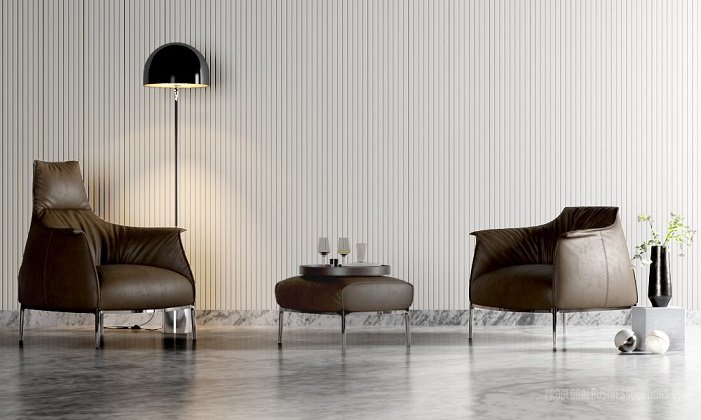Traditionally, furniture shopping involved physical visits to physical stores, allowing customers to touch, feel, and visualize pieces in person.
However, online shopping became a more prevalent option with the rise of e-commerce, making 3D furniture modeling services the go-to solution for immersive and convenient experiences. Keep reading to discover the importance of the 3D furniture design services of a 3D furniture modeling studio in creating realistic virtual showrooms.
What Has Changed with Furniture Shopping?
Customers have been found grappling with challenges like the inability to physically examine products, gauge dimensions accurately, and visualize how items would fit into their living spaces. This has left the furniture industry to seek solutions. In response, the furniture industry turned to 3D furniture design services to provide virtual showrooms to enhance the shopping experience.
Furniture manufacturers employ 3D furniture design services to create three-dimensional digital representations of furniture items, carefully crafted to resemble their real-world counterparts. The key to the success of this technology is its ability to provide a lifelike experience, allowing customers to virtually interact with furniture pieces in a way that goes beyond static images.
Unlike traditional online images, these digital models offer a 360-degree view, enabling customers to inspect every detail from various angles. The depth and accuracy of these models make it easier for customers to make informed decisions and reduce the likelihood of dissatisfaction with their purchases.
Benefits of Virtual Showrooms Provided By 3D Furniture Modeling Services
Adopting virtual showrooms powered by 3D furniture design services brings several benefits to consumers and businesses. One of the primary advantages is accessibility and convenience. Customers can explore several furniture options from the comfort of their homes, eliminating time-consuming visits to physical stores.
From a cost perspective, virtual showrooms prove to be advantageous. Businesses can significantly reduce expenses associated with maintaining traditional brick-and-mortar showrooms, translating to potential cost savings for consumers. In addition, the digital nature of these showrooms facilitates easy updates and modifications, ensuring the inventory is always up-to-date with the latest designs and trends.
Customization options are also vital for the success of virtual showrooms. 3D furniture design services allow customers to visualize different color variations, materials, and configurations, empowering them to tailor products to their preferences. This level of personalization enhances the shopping experience and increases customer satisfaction and the likelihood of purchasing.
Moreover, the environmental impact of traditional showrooms is a growing concern in today’s eco-conscious society. Virtual showrooms contribute to sustainability efforts by reducing the need for physical retail spaces and the associated carbon footprint. This aligns with the values of environmentally conscious consumers who seek products and services that prioritize sustainability.
The Technology Behind 3D Furniture Modeling Services
3D furniture design services rely on advanced software tools and platforms to bring virtual showrooms to life. High-quality rendering and realistic textures are fundamental elements that contribute to the lifelike appearance of virtual furniture. These models go beyond mere visual representation. They simulate the tactile experience of interacting with physical objects.
Integrating AR and VR further enhances the virtual showroom experience. AR allows customers to overlay digital furniture onto their real-world environments using smartphones or tablets. On the other hand, VR immerses users in a completely digital environment, providing a more immersive and interactive exploration of furniture pieces. As a result, the virtual showroom experience has become increasingly indistinguishable from the physical showroom experience for furniture shoppers.
Are There Challenges?
While the benefits of virtual showrooms and 3D furniture design services are undeniable, challenges exist in implementing these technologies successfully. Some consumers may be hesitant to fully embrace virtual shopping, expressing concerns about the accuracy of digital representations and the inability to touch and feel products physically.
Addressing these concerns requires a delicate balance between virtual and physical shopping experiences. Businesses must find ways to bridge the gap by offering innovative solutions such as virtual try-on features, detailed product descriptions, and transparent return policies to instill confidence in online shoppers. In addition, the accessibility of virtual showrooms needs to be considered. Ensuring the technology is user-friendly across various devices and internet connections is essential to expanding its reach and impact.
Summary
The power of 3D furniture modeling services in creating realistic virtual showrooms is undeniable. This technology has transformed the furniture shopping experience, offering accessibility, cost savings, customization, and sustainability. As businesses adopt 3D furniture design services, consumers will enjoy immersive and engaging virtual shopping experiences. Likewise, businesses will make more sales and experience an increase in their turnovers.

